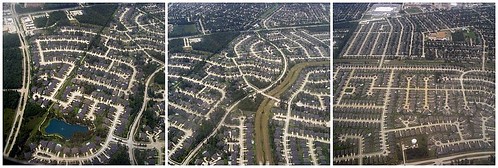Tax greenfield development, subsidize infill

Posted June 30, 2009 at 1:30PM
Tyler Caine has a terrific post on his sustainability blog Intercon extolling climate change policy to get on the smart growth bandwagon. He says it extremely well, so I am just going to quote a few bits and send you to his site if you want more:
"A number of government sponsored initiatives are targeting sustainable technologies that want to provide an easy fix to climate change (renewable energy, fuel cells, energy efficient home upgrades). But when it comes to sustainable progress, if we are going to delve into the policy game then we should be including measures that actually change the way we are doing things, not merely advance the technology that allows us to do things the same.
As a result, I would suggest taxing the development of greenfield sites and, conversely, offering incentives to redeveloping existing buildings or property near town and city centers . . .
"Undoubtedly, building on the edges is building cheaper. The land often goes for a song. Labor is less expensive. Access to sites is easier and building codes are less stringent. But the cheaper choice for builders can be more expensive for municipalities (and we know where their budgets comes from.) Sprawling development is notoriously inefficient; each an oasis of occupancy connected by thin veins of pavement that make car travel a considerable portion of daily life . . . Greenfield development can mean funding for new power lines, new sewers and new roads for a relatively small group of new citizens. It expands the coverage areas for maintenance crews, emergency vehicles and mail delivery that can drastically offset the incremental rise in tax revenue . . . Taxing this kind of sprawling development may help curb its growth in the country.
"Most importantly of all, there is no need for greenfield building. We have loads of existing space in close proximity to transportation and infrastructure . . .
"On the other side of the tax lie subsidies to shift new construction and home ownership to areas with an existing populace. New homes and offices can benefit from utilities and services that residents have already paid. In addition to possibly being cheaper than new construction, reusing existing structures drastically reduces waste from demolition and construction and negates the need for the production of new virgin materials. All of it points to lower carbon footprints and lighter lifecycle costs . . . Remember, the goal is not for less development, merely shifting it for a smarter solution. Reinforcing our town and urban centers would support a critical mass of residents that breeds efficiency where fewer services could reach more instead of wasting more taxpayer dollars on diluted redundancy . . ."
I love it. Go here for the full post, which I originally found via the Sustainable Cities Collective.
